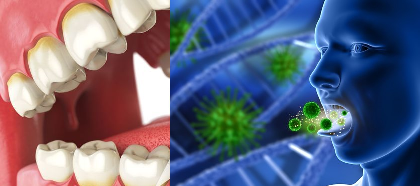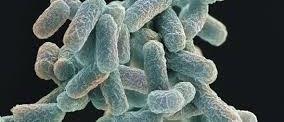There are various forms of halitosis (bad breath) that an individual can experience at different points in their life time. While some forms of bad breath may be caused by the type of food the individual consumed or ate; other forms of halitosis may warrant clinical investigation in order to remedy the situation.
Morning breath can occur in every individual and it is usually experienced after dawn. It is can be attributed to increased metabolic activities of oral microbes (acting on food leftovers in the mouth) during sleeping period. Our lifestyle can also contribute to the level of bad breath we have at any point in time.
The different forms of bad breath are as follows:
- Genuine halitosis: Genuine halitosis is synonymous to morning breath. It is physiologic in nature, and typical of the bad breath we experience after dawn. Genuine halitosis is transitory in nature, and usually fades out when we brush or wash the mouth properly. It is not a clinical condition of bad breath.
- Halitophobia: Some persons believe that they have halitosis when in the actual sense they are free from bad breath. Halitophobia is the exaggerated fear of bad breath. This type of bad breath is delusional in nature, and may continue to distress the individual until proper care is sought.
- Pseudohalitosis: Pseudohalitosis is a state in which there is actually no clear evidence of bad breath even though the individual think he or she may have halitosis. It is a false or artificial type of bad breath. People with this condition are known as halitophobics, and they spend a lot of money on mouth fresheners in order to have good breath.
- Other forms of halitosis: Other forms of bad breath as exemplified above are caused by extra-oral bacteria (i.e. bacteria from other sites of the body excluding the mouth) located in the nose, gastrointestinal tract (GIT) or respiratory tract.
TIPS FOR AVOIDING HALITOSIS
Avoiding some type of food and lifestyles can actually reduce your bad breath levels. Some of the measures of preventing bad breath are as follows:
- Chewing sugarless gums to increase saliva production and keep the mouth moist. The flushing mechanism of saliva (aside its moisturizing effect which prevents the drought of the mouth) removes oral bacteria and their metabolic products. Some human factors such fasting can also cause the dryness of the mouth; and stress and poor oral hygiene contributes to bad breath.
- Cleaning the surface of the tongue when brushing or washing the mouth.
- Eating healthy or balanced diet.
- Gargling (i.e. rinsing the mouth) before bed time with water and mild antimicrobial mouth washes.
- Brushing or washing the mouth at least twice everyday; and gargling after chewing snacks.
Since it is not feasible to eradicate oral bacteria because of their protective function in the mouth (oral bacteria prevent the growth of pathogenic yeast such as Candida), it is critical for people to imbibe good oral hygiene practices, and abscond from lifestyles and eating practices that may contribute to their having halitosis.
GENERAL GUIDELINES OF TAKING CARE OF THE TEETH AND MOUTH TO AVOID HALITOSIS
- Wash your mouth with water after every meal and especially after chewing or eating snacks.
- Always use recommended toothbrushes and mouth washes or toothpastes for washing your mouth or teeth.
- Change your toothbrush regularly at least every 3 months for a healthier tooth.
- It is advisable to wash and brush your teeth after eating in the morning and before going to bed. This will remove food particles that are imbedded within the teeth, and thus deprive the microorganisms in the mouth of materials to metabolize. The activities of microbes on food particles in the mouth especially those that are imbedded in the gum of the teeth and elsewhere in the mouth contribute significantly to halitosis.
- Always clean the back of your tongue with a plastic tongue cleaner. This should be done softly to avoid any damage to the tongue. Alternatively, use the toothbrush to scrub or wash the tongue effectively because majority of the smell in the mouth comes from there.
- Eat good food especially good breakfast in the morning before going out for work or the day’s activities. This will help saliva to flow appropriately in the mouth and thus avoid saliva accumulation – which contribute to bad breath.
- Avoid food that contains too much sugar (such as chocolates and sweets) or sticky food that can easily damage your tooth.
- Using of mouthwashes before going to bed and even when leaving the house helps to prevent the upsurge of microbes and odour that usually buildup in the mouth while sleeping.
- You can as well ask your closest friend or family member, parent or sibling to observe and check the intensity of your breath – to know if it’s bad or tolerable. This will help you to take the necessary precautions in avoiding halitosis or treating a bad breath.
- Some food or food products such as garlic, coffee and onions naturally contribute to halitosis when eaten. It is therefore necessary to ensure regular washing of the mouth with toothpaste or mouthwashes after eating such foods with malodourous potential.
- Regular visits to your dentist for checkups will go a long way in containing your bad breath (i.e. if you have one) and also help to prevent likely dental infections that may arise in the future.
References
Barrett J.T (1998). Microbiology and Immunology Concepts. Philadelphia, PA: Lippincott-Raven Publishers. USA.
Beck, J. D., Slade, G. and Offenbacher, S. (2000). Oral disease, cardiovascular disease and systemic inflammation. Periodontol, 23, 110-20.
Beers M.H., Porter R.S., Jones T.V., Kaplan J.L and Berkwits M (2006). The Merck Manual of Diagnosis and Therapy. Eighteenth edition. Merck & Co., Inc, USA.
Brooks G.F., Butel J.S and Morse S.A (2004). Medical Microbiology, 23rd edition. McGraw Hill Publishers. USA.
Champoux J.J, Neidhardt F.C, Drew W.L and Plorde J.J (2004). Sherris Medical Microbiology: An Introduction to Infectious Diseases. 4th edition. McGraw Hill Companies Inc, USA.
Davey M.E and O’toole G.A (2000). Microbial biofilms: from ecology to molecular genetics. Microbiol. Mol. Biol. Rev, 64, 847-867.
Gillespie S.H and Bamford K.B (2012). Medical Microbiology and Infection at a glance. 4th edition. Wiley-Blackwell Publishers, UK.
Jenstch, H., Pornowski, R., Kundi, G. and Gocke, R. (2003). Treatment of gingivitis with hyaluronan. J. Clin. Periodontol.,30, 159-164.
Mayooran B, Robin S and John R.T (2000). Dental caries is a preventable infectious disease. Aust. Dent. J, 45, 235-245.
Trahan L.X (1995). A review of its action on mutans streptococci and dental plaque–its clinical significance. Int. Dent. J, 45, 77-92.
Warren L (2008). Review of Medical Microbiology and Immunology. Tenth edition. McGraw Hill Companies Inc, USA.
Wilson B. A, Salyers A.A, Whitt D.D and Winkler M.E (2011). Bacterial Pathogenesis: A molecular Approach. Third edition. American Society of Microbiology Press, USA.
Discover more from #1 Microbiology Resource Hub
Subscribe to get the latest posts to your email.



